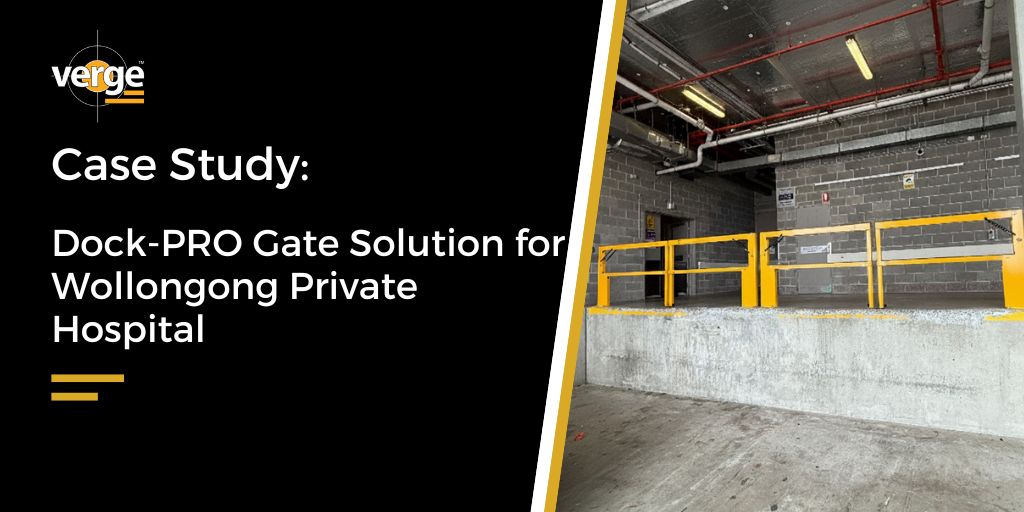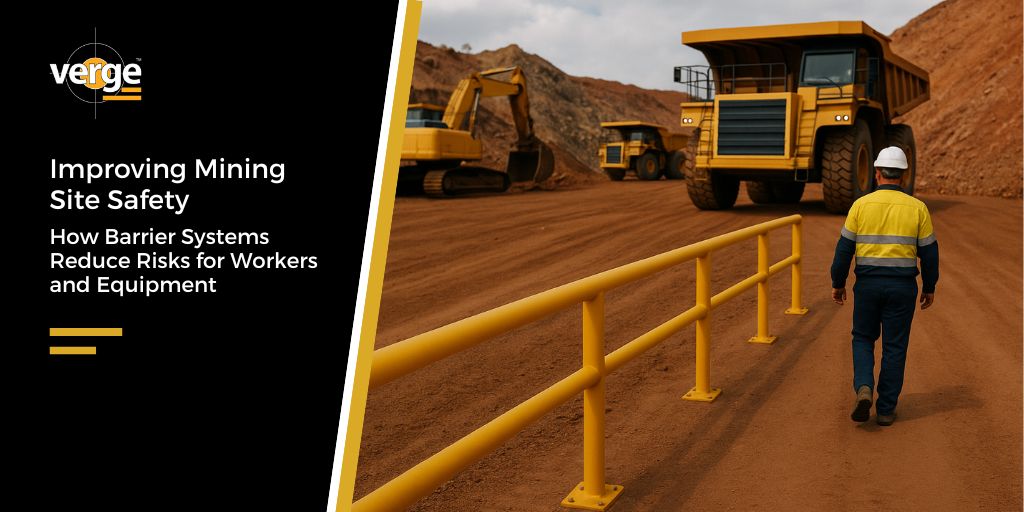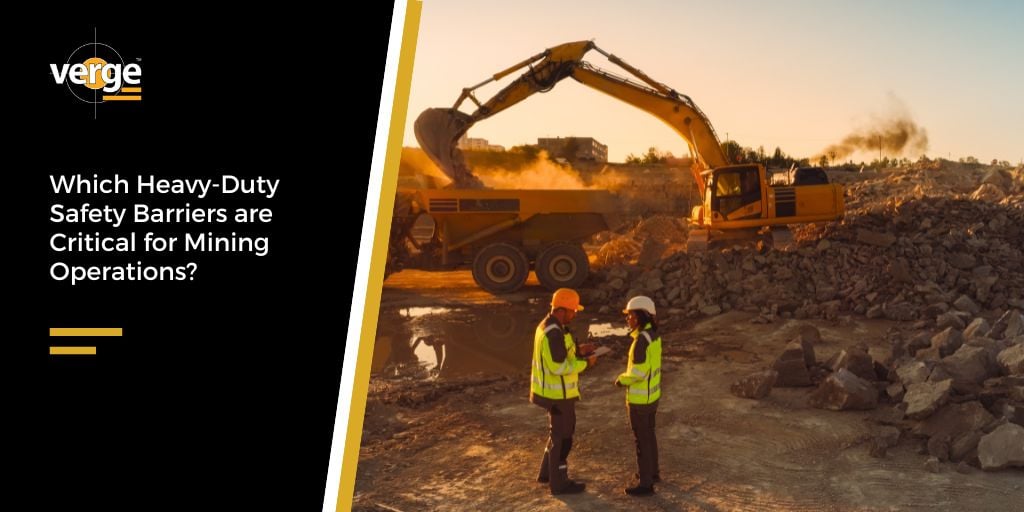
Improving Mining Site Safety
[rank_math_breadcrumb]

Mine sites are by nature, high-risk environments. Heavy machinery, uneven terrain, explosive hazards and constant movement of vehicles and personnel mean that even small errors can lead to major incidents, like machinery tipping over onto pedestrians.
While training, procedures and supervision are critical, physical barrier systems are often overlooked even though they are among the most effective controls for preventing harm.
Barrier systems, whether fixed guard rails, mobile barriers, vehicle exclusion zones or fencing, play a key role in mining site safety. They protect people, prevent equipment damage, help maintain regulatory compliance, and reduce downtime.
Working in the mining industry involves several inherent risks that can lead to serious injury or fatality if not properly managed. Barrier systems are in fact best practice and a requirement under regulatory frameworks:
The use of barrier systems is one of the most defensible ways to show that engineering controls have been considered ahead of administrative or PPE controls.
There are various barrier systems, each suitable for their applications. Choosing the right kind matters because misuse or inappropriate barrier choice undermines effectiveness.
| Barrier Type | Best Uses / Where Most Effective | Key Advantages |
| Fixed Barriers / Guardrails | Along highwalls, excavation edges, road edges, fixed platforms, loading/unloading bays. | Permanent, durable, little maintenance, continuous protection. |
| Mobile / Portable Barriers | For temporary hazards: maintenance zones, spill clean-ups, shifting operations, changing layouts. | Flexible, fast to deploy, visible, reusable, good for dynamic sites. |
| Exclusion Zone Fencing & Gates | Prevent unauthorised access to hazardous plant (e. g. crushers, screening units), chemical stores. | Keeps untrained personnel out, clear separation, often lockable. |
| Vehicle Barriers / Bollards | Protect columns, fuel depots, refuelling areas, control points near pedestrian pathways. | Stop heavy vehicle intrusions, absorb collision force, reduce secondary damage. |

How well-designed barrier systems make a difference:
What makes barrier systems work well; what differentiates systems that merely “look good on paper” versus systems that actively prevent harm:

Barrier systems can have challenges. Recognising them and doing the work to address them is part of implementing effective safety.
Challenge: Dynamic site layouts, mining sites move; stockpiles shift, blasting alters terrain, routes change.
Solution: Use a combination of fixed and mobile barriers; a mobile barrier system that can be repositioned quickly.
Challenge: Harsh environments i.e. weather, dust, corrosion.
Solution: Materials designed for mining (polymer, heavy-duty steel with coatings), regular inspections, selecting barrier products rated for the environment.
Challenge: Cost pressures and perceptions of “non-critical” safety spend.
Solution: Emphasise that barrier systems reduce cost long term: fewer incidents, less equipment damage, reduced legal and insurance risk.
Use estimations of cost-saving from avoided downtime. Also, compliance frameworks often require engineering controls before administrative ones; barriers are often seen favourably in audits or prosecutions.
These hazards show up in mining incident reports regularly. For example, “open pit wall failures” in Western Australian mines have caused damage to equipment and put personnel at risk, with near misses reported when the wall failed unexpectedly.
Further, Safe Work Australia statistics show that in mining, slips, trips, falls and being hit by moving objects or plant are among the top causes of injury and compensation claims.
Verge Safety Barriers offers mine site safety barrier solutions in Australia focused on protecting people and equipment from mobile plant and high-risk zones. Their systems are designed for the rugged demands of mining operations.
Mining regulations across states (e.g. Queensland, Western Australia) mandate that principal mining hazards are identified and controlled. Barrier systems are frequently cited in guidelines and safety bulletins as central to controlling hazards from mobile plant, edge fall hazards, and access control.
In mining, some risks are tolerable, however, falling, being struck by plant or suffering damage due to collisions between equipment and infrastructure is not. Barrier systems are among the most powerful engineering controls available. They reduce exposure to high consequence risks, protect people, reduce damage and support regulatory compliance.
As a mine site operator, safety manager or a senior leader ask yourselves:
Where are our weak edges? Where are we still relying on “words” instead of physical control?
By investing in robust barrier systems, fixed, mobile or a combination, accidents can be prevented. In turn; protecting lives, operations, livelihoods and meeting legal requirements.
Safety is not a luxury. It is fundamental.




*Applies to online orders only. *Cannot be used in conjunction with any other offer **Must purchase within 3 months of receiving the voucher ***Minimum order $1000
"*" indicates required fields
If you need assistance with selecting a product, would like a quote or want to ask a question please call our friendly team on 1800 765 539